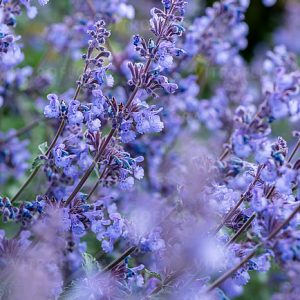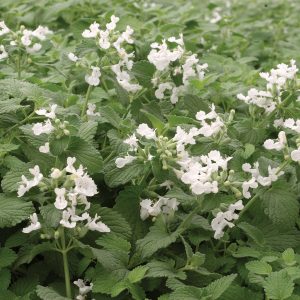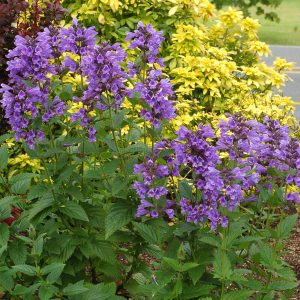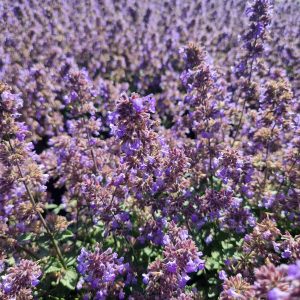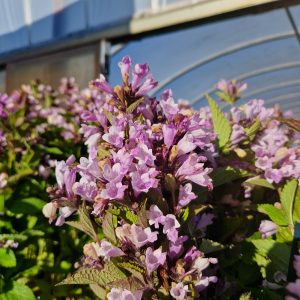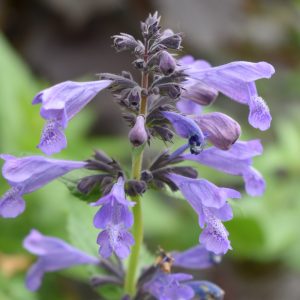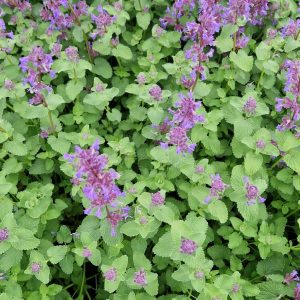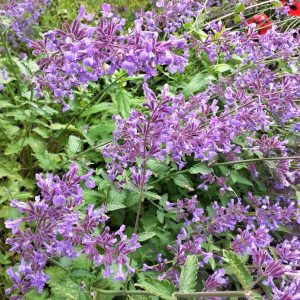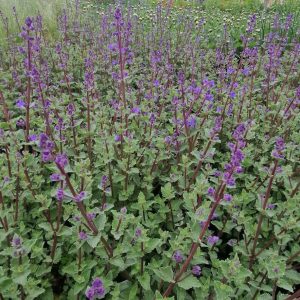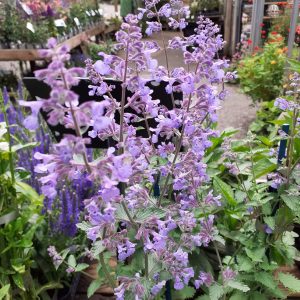Nepeta, commonly known as Catmint or Catnip, is a delightful perennial that attracts pollinators and adds a touch of beauty to your garden. Follow this comprehensive planting guide for successful cultivation:
Site Selection
Sunlight: Choose a location with full sun to partial shade. Nepeta thrives in full sunlight, but it can tolerate some shade.
Soil Type: Plant Nepeta in well-draining soil with a pH level between 6.1 and 7.8. It is adaptable to various soil types but prefers moderately fertile soil.
Planting Time
Spring or Autumn Planting: Plant Nepeta in the spring after the last frost or in the autumn. This allows the plant to establish itself before extreme weather conditions set in.
Planting Process
Seed Planting: Sow seeds directly in the garden in early spring or late autumn. Press them lightly into the soil and keep it consistently moist until germination.
Transplanting: If using seedlings, space them about 18 to 24 inches apart. Dig a hole, place the seedling, and fill with soil. Water thoroughly.
Watering
Establishment Period: Water newly planted Nepeta regularly during the first few weeks to help establish a strong root system.
Regular Watering: Once established, water consistently, especially during dry spells. Nepeta prefers slightly drier conditions than some other perennials.
Mulching
Mulch Application: Apply a layer of organic mulch around the base of the plants to conserve moisture, suppress weeds, and regulate soil temperature.
Fertilisation:
Minimal Fertilisation: Nepeta is not heavy feeders. A layer of compost in the spring should be sufficient. Avoid excessive fertilisation to prevent leggy growth.
Pruning
Deadheading: Remove spent flowers regularly to encourage continuous blooming and prevent self-seeding. Pruning can also help maintain a compact and tidy appearance.
Division (Every Few Years):
Prevent Overcrowding: Divide Nepeta every few years to prevent overcrowding and rejuvenate the plant. Divide in early spring or autumn.
Pest and Disease Management
Deer Resistance: Nepeta is often resistant to deer, but it can attract cats. If catnip is not desired, consider protecting the plants or placing them where feline visitors won’t be an issue.
Enjoy the Blooms
Blooming Season: Nepeta typically blooms from late spring to early autumn, attracting bees and butterflies with its small, tubular flowers.
By following these guidelines, you’ll create an optimal environment for your Nepeta plants to thrive and contribute to the beauty of your garden. Customise care based on the specific Nepeta variety you have and the local growing conditions. Happy gardening!



